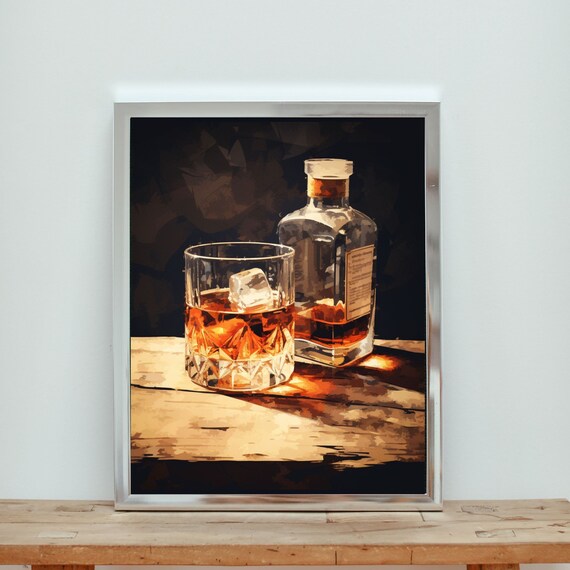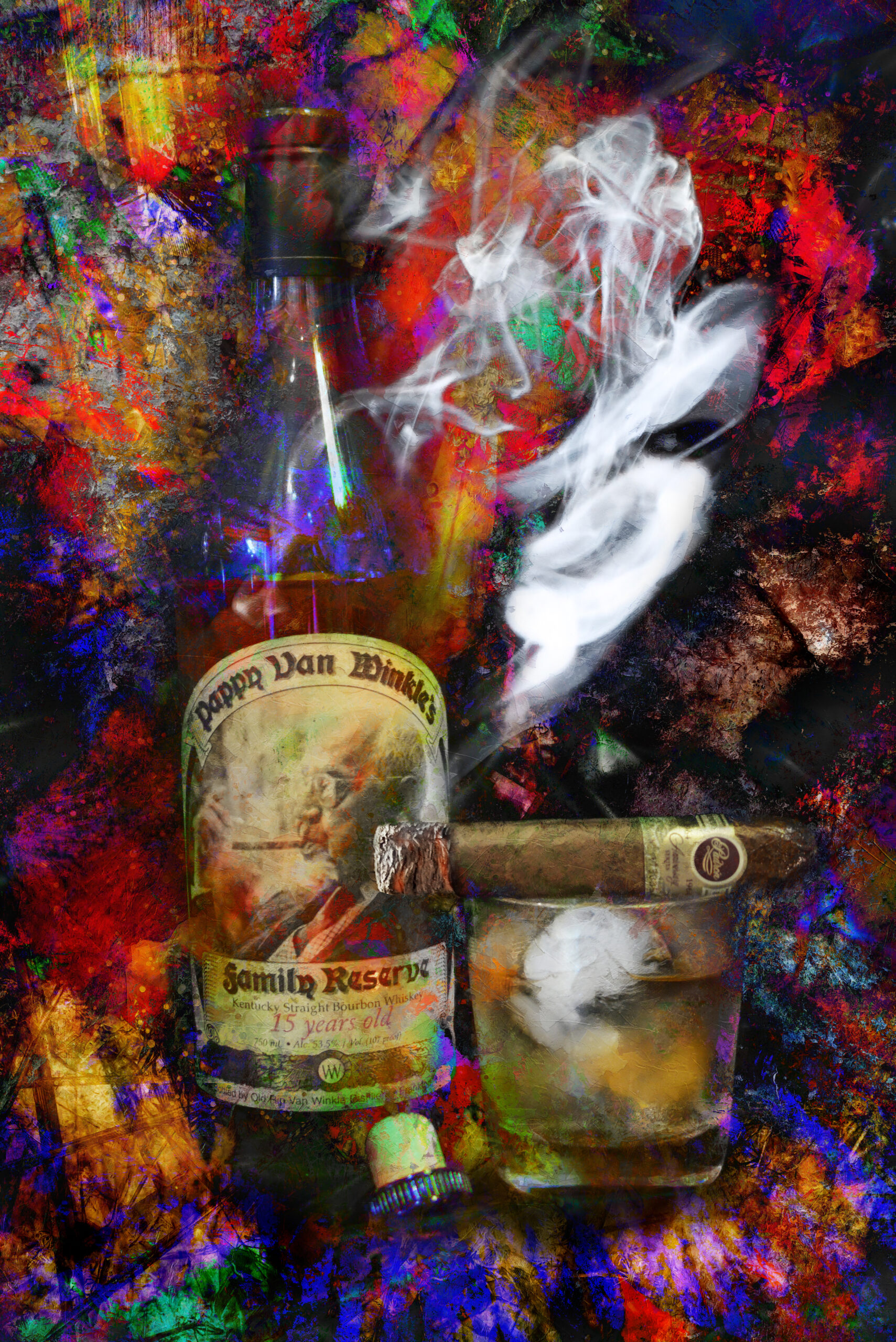Bourbon Art in Contemporary Society: Where Tradition Satisfies Development
Wiki Article
The Relevance of Whiskey Art in Celebrating Heritage and Workmanship in the Beverage Industry
The elaborate connection between whiskey art and the celebration of heritage and workmanship within the drink market can not be overstated. Through thoughtfully made bottles and labels, bourbon brand names envelop their historical roots and the artisanal abilities that specify their production methods. This creative measurement not only enhances market appeal yet likewise serves as a conduit for social storytelling, fostering a much deeper link between the craft and the customer. As we check out the various elements of this topic, interesting questions concerning the effect of modern fads on conventional practices emerge, triggering further exam.The Historic Roots of Whiskey
At the heart of bourbon's appeal exists a rich tapestry of historic origins that trace back to old civilizations. The beginnings of whiskey can be linked to the purification practices of the Sumerians and Babylonians around 2000 BCE, where very early kinds of fermented grain beverages started to arise. Nonetheless, it was in the Middle Ages that the art of distillation evolved substantially, specifically in Ireland and Scotland, resulting in the production of whiskey as we understand it today.
The term "whiskey" itself stems from the Gaelic word "uisce beatha," indicating "water of life." This expression underscores the cultural relevance of bourbon in Celtic cultures, where it was often connected with routines, parties, and public bonding. By the 15th century, purification became a recognized craft within monastic neighborhoods, leading the way for the facility of lawful distilleries.
As profession courses increased, whiskey's popularity grew, transcending regional boundaries and capturing the interest of connoisseurs worldwide. Whiskey Art. This historical journey shows not only the craftsmanship behind whiskey production but also its essential role in social and cultural contexts, marking it as a significant drink throughout background
Artistic Expression in Branding
Bourbon branding stands as an engaging crossway of creativity and commerce, where visual identity plays a crucial role fit customer understanding. The looks of scotch labels, packaging, and marketing products mirror not only the brand's story yet likewise its core values and heritage. Through imaginative expression, distilleries share a narrative that resonates with customers, stimulating feelings and triggering connections.The use of shade, typography, and imagery in branding offers to separate products in a saturated market. Conventional concepts may stimulate a sense of authenticity and workmanship, while contemporary layouts can represent technology and forward-thinking. This tactical imaginative direction improves brand name recognition and commitment, allowing consumers to build a personal connection with the bourbon they choose.
Additionally, artistic expression in branding typically functions as a celebration of local heritage. Distilleries regularly incorporate regional icons or historical references into their layouts, creating a local color that welcomes consumers to partake in a broader social experience. Ultimately, the artistry behind scotch branding not only improves visual charm yet also improves the overall story of the brand, fostering a much deeper admiration for the workmanship and heritage ingrained in each container.
Craftsmanship in Container Layout
The creativity obvious in scotch branding extends beyond aesthetic identification to include the workmanship included in container style. Each container works as a vessel not simply for the spirit within, yet likewise for the story it outlines its top quality, tradition, and beginning. The design process needs meticulous focus to information, as components such as closure, form, and informative post material add substantially to the general assumption of the scotch.Workmanship in bottle layout entails picking top notch glass that can boost the bourbon's color and quality, while likewise offering a responsive experience for the customer. The shape of the bottle must be both functional and visually appealing, often mirroring the heritage of the brand name. Several distilleries go with special forms or printed logos that stimulate a feeling of authenticity and background.
Moreover, the label design and typography play a crucial duty in communicating the brand name's story. Limited Edition. A well-crafted bottle not just mesmerizes the customer's eye yet additionally strengthens the brand's dedication to high quality and practice. In this method, the craftsmanship of container design becomes a crucial facet of the whiskey experience, merging creativity with a profound regard for heritage
Cultural Relevance of Bourbon Art
Commemorating custom and workmanship, the social value of whiskey art goes beyond mere appearances, intertwining with the social and historical narratives of the regions from which it originates. Each bottle serves as a canvas, portraying the distinct stories, mythology, and practices that have actually shaped local whiskey-making practices. The elaborate styles often mirror the heritage of the distillers, integrating icons and motifs that resonate with the culture and worths of their neighborhoods.
On top of that, bourbon art plays a vital function in communal gatherings and events, offering as a concrete link between people and their shared experiences. By valuing the artistry in whiskey packaging, consumers grow a much deeper understanding and regard for the craft, ultimately enriching their satisfaction of the beverage itself.
Modern Trends in Scotch Presentation
Learn More In the last few years, the discussion of scotch has advanced to show contemporary preferences and fads while still honoring standard workmanship - Bourbon Art. Distilleries are progressively focusing on aesthetic elements that boost the total drinking experience, linking the void between heritage and modernityIngenious bottle layouts have arised, commonly including lasting materials and imaginative labels that tell compelling tales. Many brands currently collaborate with local musicians, infusing their products with distinct aesthetic expressions that resonate with customers. In addition, limited-edition releases are typically packaged in collectible containers, including worth and appeal for lovers.

Verdict
In verdict, scotch art offers as an important channel for sharing the heritage and workmanship inherent in the drink market. Through intricate branding, cutting-edge bottle designs, and culturally considerable creative elements, whiskey brand names properly recognize their practices and link with customers.

Craftsmanship in container layout entails choosing high-quality glass that can improve the scotch's color and clearness, while likewise offering a responsive experience for the consumer. In this means, the craftsmanship of bottle design comes to be an essential facet of the scotch experience, combining virtuosity with an extensive respect for heritage.
In final thought, bourbon art serves as an important conduit for sharing the heritage and craftsmanship fundamental in the drink market.
Report this wiki page